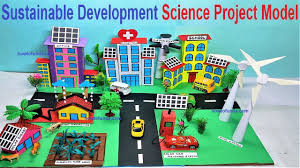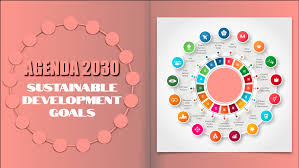The Power of Sustainable Development Projects
Implementing sustainable development projects is crucial in addressing environmental, social, and economic challenges that our world faces today. These projects aim to meet the needs of the present without compromising the ability of future generations to meet their own needs.
Environmental Impact
Sustainable development projects focus on minimizing environmental impact by promoting renewable energy sources, reducing waste generation, and preserving natural habitats. By incorporating eco-friendly practices, such as recycling and energy efficiency measures, these projects help protect ecosystems and biodiversity.
Social Benefits
Furthermore, sustainable development projects contribute to social well-being by improving access to essential services like healthcare, education, and clean water. They also prioritize community engagement and empowerment, ensuring that local voices are heard and respected throughout the project implementation process.
Economic Growth
From an economic perspective, sustainable development projects stimulate job creation in green industries and promote long-term economic stability. By investing in sustainable infrastructure and technologies, communities can enhance their resilience to climate change impacts and create a more prosperous future for all.
Case Study: Solar Energy Initiative
One successful example of a sustainable development project is the implementation of a solar energy initiative in a rural village. By installing solar panels on households and community buildings, residents now have access to clean and affordable electricity, reducing their reliance on fossil fuels and lowering carbon emissions.
Conclusion
In conclusion, sustainable development projects play a vital role in promoting environmental stewardship, fostering social inclusion, and driving economic growth. By embracing sustainability principles in project planning and execution, we can create a more equitable and resilient world for current and future generations to thrive.
9 Essential Tips for Successfully Managing a Sustainable Development Project
- Set clear and measurable goals for your sustainable development project.
- Involve stakeholders from the community to ensure their needs and concerns are addressed.
- Consider the environmental impact of your project and aim to minimize any negative effects.
- Promote social equity and inclusivity in all aspects of your project.
- Use resources efficiently and consider renewable energy sources where possible.
- Monitor and evaluate the progress of your project regularly to make necessary adjustments.
- Collaborate with other organizations or agencies working on similar goals to amplify impact.
- Communicate transparently with all stakeholders about the progress and challenges of the project.
- Ensure long-term sustainability by planning for maintenance, funding, and community empowerment.
Set clear and measurable goals for your sustainable development project.
Setting clear and measurable goals for your sustainable development project is essential for ensuring its success and impact. By defining specific objectives that are achievable and quantifiable, you can track progress, evaluate outcomes, and make informed decisions throughout the project lifecycle. Clear goals provide a roadmap for implementation, guiding stakeholders towards a shared vision of sustainability. Moreover, measurable goals enable you to demonstrate the tangible results of your efforts, enhancing accountability and transparency in driving positive change towards a more sustainable future.
Involve stakeholders from the community to ensure their needs and concerns are addressed.
To enhance the effectiveness of a sustainable development project, it is essential to involve stakeholders from the community. By engaging with local residents, organizations, and leaders, project planners can gain valuable insights into the specific needs and concerns of the community. This collaborative approach not only fosters a sense of ownership and empowerment among stakeholders but also ensures that the project is tailored to address the unique challenges and aspirations of those directly affected. Ultimately, by prioritizing community involvement, sustainable development projects can achieve greater impact and long-term success in creating positive change for all involved.
Consider the environmental impact of your project and aim to minimize any negative effects.
When embarking on a sustainable development project, it is crucial to carefully consider the environmental impact of the initiative and strive to minimize any adverse effects. By conducting thorough assessments and incorporating eco-friendly practices into the project design and implementation, such as reducing waste generation, promoting renewable energy sources, and preserving natural habitats, we can ensure that our actions contribute positively to the well-being of both the environment and future generations. Prioritizing sustainability in every aspect of the project not only helps protect ecosystems and biodiversity but also paves the way for a more resilient and harmonious coexistence with our planet.
Promote social equity and inclusivity in all aspects of your project.
Promoting social equity and inclusivity in all aspects of a sustainable development project is essential for ensuring that the benefits reach all members of the community. By actively involving marginalized groups, addressing disparities in access to resources, and fostering a culture of respect and diversity, projects can create a more inclusive and equitable society. Embracing social equity not only enhances the project’s impact but also builds stronger, more resilient communities that prioritize fairness and justice for all individuals.
Use resources efficiently and consider renewable energy sources where possible.
Efficient resource utilization and the incorporation of renewable energy sources are essential aspects of sustainable development projects. By maximizing the efficiency of resource use, such as water and materials, projects can minimize waste generation and environmental impact. Additionally, integrating renewable energy sources like solar or wind power not only reduces carbon emissions but also contributes to long-term sustainability by harnessing clean and abundant energy sources. Embracing these practices not only benefits the environment but also promotes economic savings and resilience in the face of climate change challenges.
Monitor and evaluate the progress of your project regularly to make necessary adjustments.
Monitoring and evaluating the progress of a sustainable development project regularly is essential to ensure its success. By tracking key performance indicators and assessing the impact of project activities, organizations can identify strengths, weaknesses, and areas for improvement. This proactive approach allows project managers to make necessary adjustments in real-time, optimize resource allocation, and enhance overall project outcomes. Regular monitoring and evaluation not only help maintain project alignment with sustainability goals but also enable continuous learning and adaptation for greater effectiveness in achieving long-term sustainable development objectives.
Collaborate with other organizations or agencies working on similar goals to amplify impact.
Collaborating with other organizations or agencies that share similar goals is a key tip for enhancing the impact of sustainable development projects. By pooling resources, expertise, and networks, collaborative efforts can amplify the reach and effectiveness of initiatives aimed at promoting environmental sustainability, social equity, and economic prosperity. Through strategic partnerships and coordinated actions, stakeholders can leverage collective strengths to address complex challenges and drive meaningful change on a larger scale. Synergistic collaborations not only maximize impact but also foster innovation, knowledge sharing, and mutual support among diverse entities working towards a common vision of a more sustainable future.
Communicate transparently with all stakeholders about the progress and challenges of the project.
Effective communication is key in ensuring the success of a sustainable development project. By maintaining transparent dialogue with all stakeholders, including community members, government agencies, and partner organizations, project leaders can build trust, address concerns, and foster collaboration. Sharing updates on progress and challenges openly not only enhances accountability but also allows for valuable input and feedback from those directly impacted by the project. Transparent communication serves as a foundation for meaningful engagement and paves the way for a more inclusive and sustainable development process.
Ensure long-term sustainability by planning for maintenance, funding, and community empowerment.
To ensure the long-term sustainability of a sustainable development project, it is essential to incorporate plans for ongoing maintenance, secure funding sources, and empower the local community. By establishing a maintenance schedule and training local residents to take care of project infrastructure, its longevity can be guaranteed. Securing sustainable funding streams ensures that the project can continue to operate effectively over time. Additionally, involving and empowering the community in decision-making processes and project management fosters a sense of ownership and commitment, leading to greater success and lasting impact.



